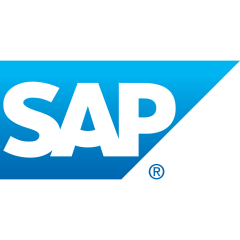One of the advantages of this product is integration. It has a really fantastic integration. I always have a one-to-one with my integration consultants: doing the success factor integration with SAP S/4HANA Cloud, or doing other types of integrations. We have a lot of methods for integration: standard integration and customized integration with third parties. The integrations work well with no issues.
SAP S/4HANA Cloud vs Oracle: In Oracle, for example, you can easily install even Oracle 19c or the latest version in your laptop. You can test it, get it certified, and even look for the application, but it's really difficult to install Hana. It's really difficult to reach any testing environment. It's difficult to test the version.
I'm struggling to hire in my team. While I was with Oracle for 15 years as a senior manager for their support solution center in Smart Village, I didn't face that much of a struggle in hiring like what I'm facing now in SAP. This is because Oracle (like Microsoft) made their products available for downloading, testing, etc., but for SAP, it's difficult.
I've had sufficient time to evaluate ByD. It is going on the right track in terms of improvement: technical-wise and featurewise. There's nothing you need to improve in this solution's performance. There's nothing major in its essential or core features: in the FI or supply chain or procurement through the cloud. It's doing a great job.
Testing is the main thing I'd like to see improved.
An additional feature I'd like to see on SAP S/4HANA Cloud is the production application or module. For small to medium businesses, there's only a finance module and the standard non-finance module, e.g. supply chain, but there's no production planning. That is a factor. We need to use the smaller version of production planning with the smaller version of quality management. I hope to see this feature in the cloud application.
I've been using this solution for six years.
I see this application as really stable.
They need to improve SAP S/4HANA Cloud's scalability and make it like Oracle's. They need to do more about scalability. This is a major issue and they need to put more effort into it, but I think they are improving.
I don't have complaints about the support. They were able to point out the problem.
I don't have much information about AWS, but it's booming. I hear a lot of customers moving to AWS because they say it's stable and has no major issues with it. I have more experience with SAP S/4HANA Cloud though, and it's fantastic. It's going very well. Most of the small to medium companies are now moving to business by design. This is a very great application.
Hana hosting vs AWS: It is the same in Hana, but on cloud. I'm talking about the cloud application, e.g. ByD. This is great.
This solution isn't resource-intensive. It's a low-key solution.
S4 Hana on cloud vs on-premises: It's been years since on-premise deployment has been applied. All should move to the cloud version. You will be forced to move to the cloud version. No more on-premise will be available for this solution.
I've been working in the last five or six years focusing on SAP cloud applications, even the on-premises ones. It ranks number one from my point of view. The other products in the market are also doing fine, but from the integration point of view, especially in the production and manufacturing industries: It's the number one application in manufacturing, so this gives a great advantage to SAP.
I would say to every CEO or to any company that they should start looking into moving their applications and their database. They should move everything to cloud before they are forced to do it because of limited time. They need to be proactive in this direction because there's a lot of benefits from the cloud from a performance perspective. It helps people to focus on data analysis, reports, and maintenance of cloud environments. It requires less effort on the IT people, so we can use them to start focusing on other current digitalization requirements. There's a lot of challenges and they need to sprint all of their work e.g. field work, work related to hardware and networking switches, etc.
I'm giving this solution a score of eight out of ten.













